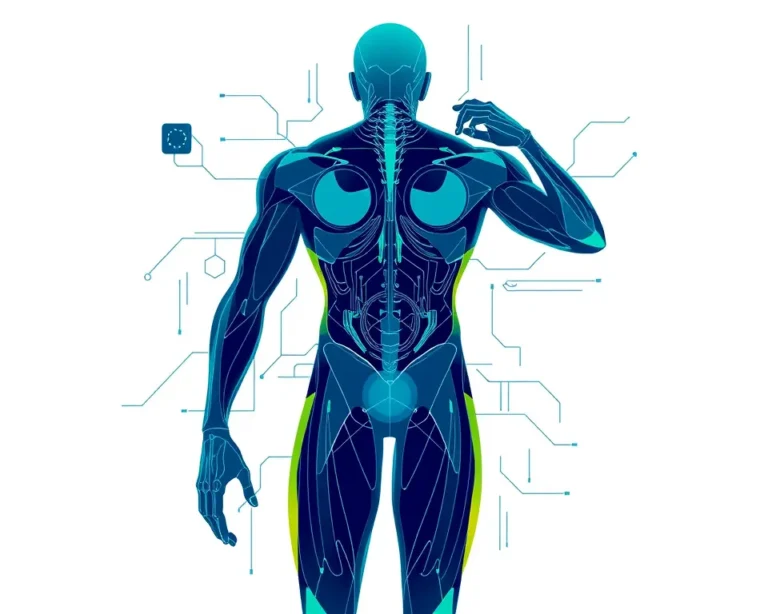The fitness world is experiencing a significant transformation thanks to rapid advancements in technology. Gone are the days of simply counting steps or tracking calories. Today’s fitness tech goes far beyond basic tracking, offering personalized coaching, real-time feedback, and adaptive training plans that cater to individual needs and goals. This evolution is quietly reshaping how we approach health and wellness, making it more accessible, effective, and engaging.
The Rise of AI-Powered Fitness
Artificial intelligence (AI) is at the heart of this transformation. AI-powered fitness platforms and wearables analyze vast amounts of data, from sleep cycles to metabolic patterns, to provide users with highly personalized insights and recommendations. This level of personalization was once unimaginable, but it is now becoming the standard in the fitness industry.
Personalized Training Plans
AI algorithms analyze various data points, including age, fitness level, medical history, and daily activities, to create workout routines tailored to individual needs. These smart systems adjust training intensity based on progress, recovery time, and stress levels. On energetic days, the AI trainer might suggest more challenging exercises, while on less optimal days, it modifies the workout to prevent burnout.
Examples of AI-driven fitness apps include Fitbod, which tailors exercise routines based on a user’s goals, previous workouts, and available equipment. Spurfit analyzes user data, such as fitness goals, body metrics, and workout preferences, to design personalized workout routines, nutrition plans, and wellness strategies.
Real-Time Feedback and Form Correction
AI-powered fitness apps use computer vision technology to analyze real-time movement patterns and provide immediate feedback on exercise form. These applications can detect whether squats are deep enough, whether the back is properly aligned during deadlifts, or whether push-up form needs adjustment. This technology helps users correct their form before bad habits develop, reducing the risk of injuries and maximizing workout effectiveness.
Smart fitness equipment, such as Tonal, Tempo Studio, and Peloton AI Coach, also utilizes AI algorithms to analyze movement patterns and provide real-time form correction, ensuring users get the most out of every session.
AI-Enabled Virtual Assistants and Chatbots
AI-powered virtual assistants and chatbots are changing the way personal trainers work, helping them automate and scale their services. These tools can create personalized workout plans for all fitness levels and goals, generate engaging content, and respond to client inquiries in real-time.
The Role of Wearable Technology
Wearable technology, including smartwatches, fitness trackers, and smart rings, plays a crucial role in the rise of smarter fitness tech. These devices offer real-time insights into health metrics like heart rate, sleep quality, and activity levels, providing users with valuable data to optimize their performance and overall well-being.
Biomonitoring and Real-Time Health Insights
Wearable devices equipped with advanced sensors can monitor various health indicators, including heart rate variability, hydration levels, and stress markers. These devices use AI algorithms to predict potential health risks, giving early warnings for conditions like dehydration, overtraining, and irregular heart rhythms. This real-time feedback allows users to make timely adjustments to their fitness routines, benefiting their overall health and wellness.
Revolutionizing Recovery and Injury Prevention
AI-powered recovery trackers analyze sleep patterns, muscle strain, and body temperature to provide personalized recovery recommendations. These recommendations may include optimal rest days, customized stretching routines, or dietary adjustments, ensuring individuals recover efficiently and avoid injuries.
Virtual and Augmented Reality in Fitness
Virtual reality (VR) and augmented reality (AR) technologies are introducing a new dimension to fitness, offering immersive workout experiences that keep users engaged and motivated.
Immersive Workout Experiences
VR transforms workouts by immersing users in dynamic, virtual environments, making cardiovascular exercises more engaging and enjoyable. Users can run through a virtual forest or explore a cityscape, turning routine workouts into adventurous experiences.
Gamification of Fitness
VR and AR technologies gamify the fitness experience, allowing users to compete in virtual races, tackle obstacle courses, or engage in fitness challenges. This gamification adds a social dimension to the fitness journey, making it more fun and interactive.
Smarter Gyms and Connected Fitness
The rise of smarter fitness tech is also transforming gyms and fitness facilities, creating more personalized, efficient, and enjoyable workout experiences.
Smart Equipment and IoT-Enabled Gyms
Smart equipment is bringing the Internet of Things (IoT) onto the gym floor, allowing users to track their progress, receive personalized feedback, and connect with other users. This equipment can connect with wearable devices, feeding important workout data to a wide range of fitness apps.
Hybrid Fitness Experiences
Many gyms now offer digital platforms alongside their brick-and-mortar facilities, providing at-home workout content or live-streamed classes through apps and websites. This hybrid approach offers members unparalleled convenience and choice, allowing them to work out anywhere, anytime.
Community Building and Gamification
Digital platforms foster community and accessibility, particularly for rural areas. Group fitness or cycling studios with on-demand classes and augmented reality experiences make exercise engaging and dynamic, allowing users to connect with others and stay motivated.
Ethical AI and the Future of Fitness
As AI becomes more prevalent in the fitness industry, it is important to consider the ethical implications of this technology. Ethical AI nudging uses thoughtful design to support healthier routines in daily life without making people feel pressured or judged. This approach helps people develop better habits over time, promoting long-term health and wellness.
Sentiment-Aware Systems
Sentiment-aware systems are starting to appear in wellness and mental health apps, influencing fitness platforms. These systems pick up on how someone feels in the moment, providing personalized support and encouragement.
Data Privacy and Security
As with any technology that collects personal data, it is important to ensure that fitness tech is secure and protects user privacy. Fitness companies must be transparent about how they collect, use, and share user data, and they must provide users with control over their data.
The Top Fitness Trends in 2025
Several key trends are shaping the fitness industry in 2025:
- Tech-Driven Personalization: AI is transforming the fitness industry, offering customized, data-driven solutions that adapt to individual needs.
- Wearable Technology: Smartwatches, fitness trackers, and smart rings provide real-time insights into health metrics, empowering users to optimize their performance and overall well-being.
- Hybrid Fitness: Gyms are offering digital platforms alongside their brick-and-mortar facilities, providing at-home workout content and live-streamed classes.
- Virtual and Augmented Reality: VR and AR technologies offer immersive workout experiences that keep users engaged and motivated.
- AI Fitness Coaches: AI-powered virtual personal trainers provide users with real-time feedback on their form and technique, enhancing the quality of workouts and reducing the risk of injury.
- Integrated Mental Health Care & Wellness: Fitness platforms are incorporating mental health coaching, recognizing the impact of stress management and emotional well-being on productivity and overall health.
- Functional Training and Mobility: Functional training remains popular, focusing on training for life aging, injury prevention, and creating better movement in the body.
- Corporate Wellness: Corporate wellness programs are incorporating physical activity and mental health coaching, recognizing the impact of stress management and emotional well-being on productivity and overall health.
- Prioritizing Recovery: Rest and recovery have shifted from a supplementary concept to a necessary pillar of fitness, with recovery rooms, guided stretching classes, and advanced recovery tools becoming mainstream.
Conclusion
The fitness industry is undergoing a rapid transformation, driven by the integration of innovative technologies. From AI-powered personalized training plans to wearable devices that provide real-time health insights, technology is making fitness more accessible, effective, and engaging than ever before. As we continue to embrace these advancements, we can expect to see even more exciting developments that will further enhance the member experience and streamline operations. By staying informed and embracing these technological advancements, fitness facilities and individuals can position themselves for long-term success and stay ahead of the competition. The future of fitness is undeniably intertwined with technology, and the possibilities are vast.







